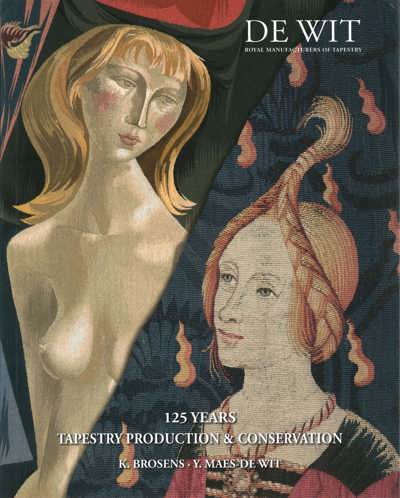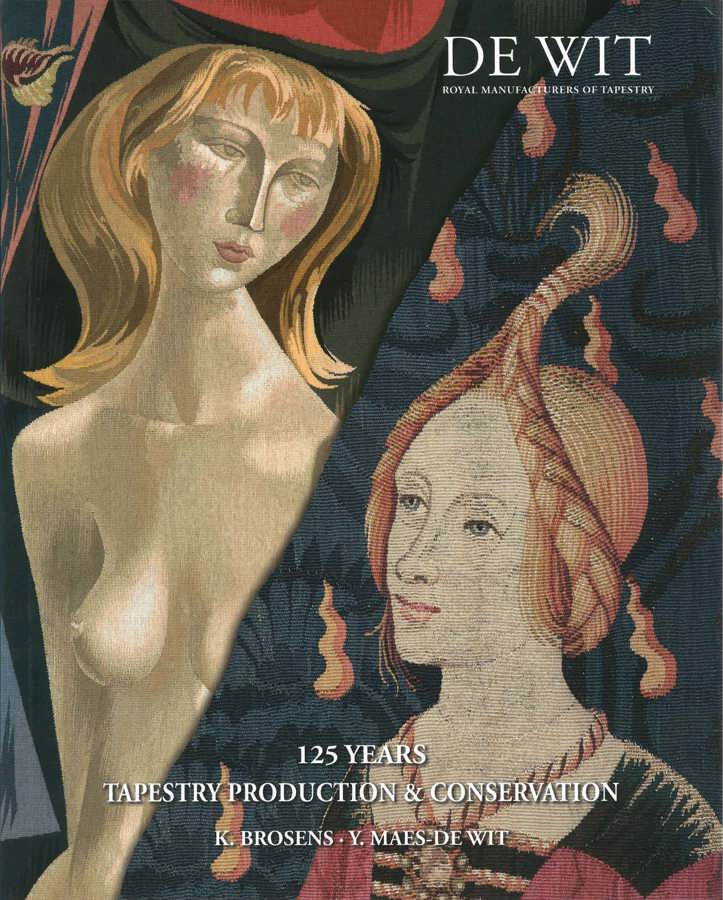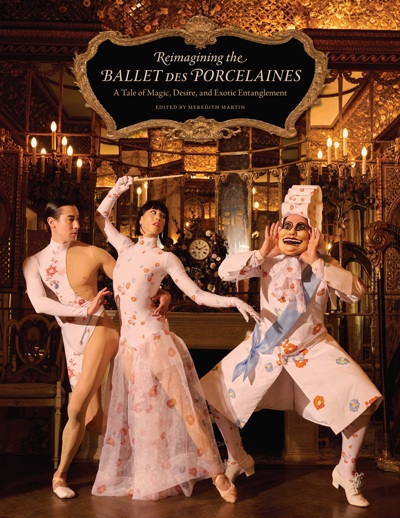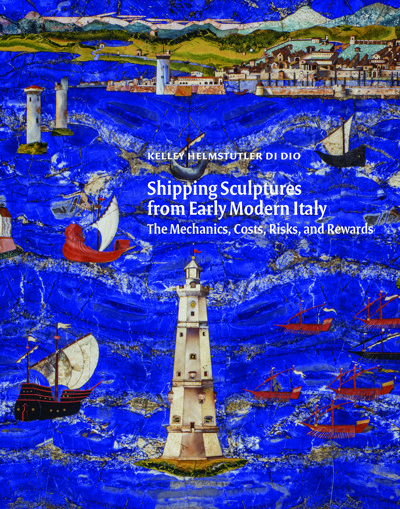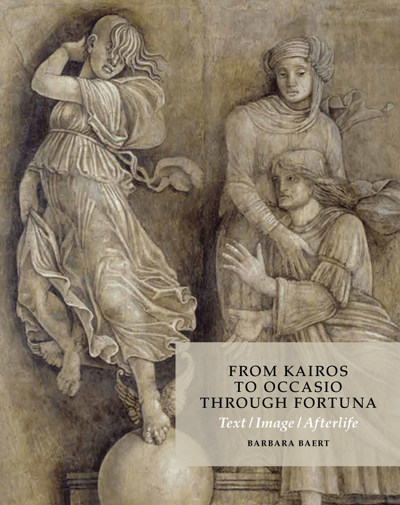
Tapestry Production & Conservation
125 Years De Wit Royal Manufacturers of Tapestry
Koen Brosens, Yvan Maes De Wit
- Pages: 324 p.
- Size:240 x 300 mm
- Illustrations:200 col.
- Language(s):English
- Publication Year:2019
- € 110,00 EXCL. VAT RETAIL PRICE
- ISBN: 978-1-909400-52-8
- Hardback
- Available
This volume demonstrates the variety of ways in which ongoing research and the development of new technology can serve to revive the splendour of fragile tapestries kept in European and American museums.
“(...) a work that is exceptional for the seriousness, density and innovation of its content— an essential point of reference regarding an important part of the history of tapestry production, and current concerns in respect of restoration." (Maria Taboga and Nello Forti Grazzini, in Hali, 204, p. 110)
Koenraad Brosens is Full Professor in and Chair of Art History at the University of Leuven. He has published widely on Flemish and European tapestry. He directs projectcornelia.be, a multidisciplinary data-driven computational research project focusing on the seventeenth-century Antwerp and Brussels art worlds.
Yvan Maes De Wit graduated in Art History at the University of Louvain. He was trained as a master weaver and restorer by his grandfather, Gaspard De Wit. Since 1980, he has headed the Royal Manufacturers of Tapestry De Wit in Belgium, a renowned workshop whose access to unique technology and expertise have enabled it to undertake the largest international conservation campaigns in the field and to create an unmatched client list of prominent institutions and museums.
Supported by dozens of magnificent illustrations, this volume demonstrates the variety of ways in which ongoing research and the development of new technology can serve to revive the splendour of fragile tapestries kept in European and American museums. As the Royal Manufacturers of Tapestry, De Wit has been a leading force in undertaking the most pioneering and impressive restoration and conservation campaigns for more than a century. The enterpreneurial and artistic strategies that marked the beginning and subsequent development of De Wit, are extensively discussed in the first part of this book. Koenraad Brosens provides an in-depth analysis of the roles played by the three directors of the Royal Manufacturers – from founding father Theophiel De Wit, to Gaspard De Wit, to current director Yvan Maes De Wit. Each of these individuals’ choices have been closely linked to the increasingly rapid and significant developments in the European and American tapestry landscapes. The second part of this volume, by Yvan Maes De Wit, surveys the most pioneering and impressive restoration and conservation campaigns undertaken by the Royal Manufactory. Through its original and creative scope of investigation, this book aims to make an invaluble contribution to art-historical discussion and research on nineteenth- and twentieth-century tapestry production, restoration and conservation.
Foreword
Acknowledgements
DE WIT. ROYAL MANUFACTURERS OF TAPESTRY
Koenraad Brosens
Introduction
1 Theophiel De Wit
The renewed interest in tapestry 1874
1.1 The renewed interest in tapestry
1.2 Apprenticeship at the Braqueni
1.3 The De Wit manufactories 1889
2 Gaspard De Wit
Tapisseries de style and contemporary designs 1925
2.1 State-funded exploration of contemporary designs 1925
2.2 Growing trust in contemporary designs 1943
2.3 Commissions for governments and business 1948
2.4 Contemporary designs and tapisseries de style 1948
3 Yvan Maes De Wit
Production and conservation since 1971
3.1 The metamorphosis of the manufactory 1971
3.2 Growth and consolidation 1987
TAPESTRY CONSERVATION
Yvan Maes De Wit
Introduction
Technical Foreword
1 The Four Elements from the Duke of Buccleuch collection, Boughton House
Taking down heavily damaged tapestries
2 Les Deux Taureaux from Mobilier National, Paris
Preliminary treatments, the analysis, research and documentation
3 The Story of Rinaldo and Armida from Château de Cadillac
Removal of adhesive strips from the back of tapestries
4 Epic of Alexander the Great in the East from the Princes Doria Pamphilj collection, Palazzo del Principe, Genoa
Flattening out any irregularities in a tapestry prior to cleaning
5 Lady and the Unicorn from Musée National du Moyen-Age, Hôtel de Cluny, Paris
Cleaning ancient tapestries by aerosol suction
6 Gideon Chooses His Army from the National Trust collection, Hardwick Hall
Cleaning exceptionally dirty tapestries
7 Triumph of Prudence from National Museum of Scotland, Edinburgh
Cleaning tapestries with linings and/or different consolidation fabrics on the back
8 Triumph of Fame over Death from Rijksmuseum, Amsterdam
The use of aerosol suction to eliminate previous bleeding on ancient tapestries
9 Los Honores from Patrimonio Nacional, Madrid
A conventional conservation process
10 The Riding Lesson from the Prince Colonna collection, Palazzo Colonna, Rome
Consolidation treatment of large gaps using dyed consolidation fabrics
11 The Youth of Alexander the Great from the Princes Doria Pamphilj collection, Palazzo del Principe, Genoa
Conservation treatment using coloured fixing stitches in areas where warp threads are exposed
12 Verdures with Unicorns from the Prince Borromeo collection, Palazzo Borromeo, Isola Bella,Lago Maggiore
Visual integration treatment in areas where silk and wool have been lost
13 The Fall of the Idols from Musée des Arts Décoratifs, Paris
Visual integration treatment in large areas where both wefts and warps have been lost
14 The Story of Dido and Aeneas from Cleveland Museum of Art
Tapestry conservation using laid-couching stitches
15 The Castle of Madrid from Château de Saint Germain-en-Laye
Conservation of tapestries with a combination of laid-couching stitches and angled fixing stitches
16 Indes from Musée du Louvre, Paris
Reweaving interventions where previous restoration is visually disruptive to the viewer
17 The Story of Moses from Château de Châteaudun
Conservation and visual integration treatments combining the use of consolidation fabric, dyed or undyed angled fixing stitches, laid couching stitches, new warps, new wefts and other alternative treatment methods
18 The Life of Christ and the Triumph of the Eucharist from St John’s Co-Cathedral, Malta
The lining system
19 The Canopy of Charles VII from Musée du Louvre, Paris
The dual-network lining system
20 The Capture of Asilah and Tangier from Pastrana Collegiate Church
Hanging tapestries on an extension of the lining and with a dedicated hanging board
21 The Story of David and Bathsheba from Musée National de la Renaissance, Château d’Ecouen
A hanging system using wall fixtures for large tapestries
22 The Planets and the Days from Château de Chaumont-sur-Loire
The hanging system for tapestries without using wall fixtures
23 The tapestry storage facility at Château de Chambord and Kunsthistorisches Museum, Vienna
The system of storing tapestries on galvanised steel tubes with a polyethylene foam cover
24 The Toms collection, Canton de Vaud, and the Art Institute of Chicago collection
Organisational, logistical and economic aspects of two major conservation campaigns
Conclusion
Major conservation jobs entrusted to the Royal Manufacturers De Wit
Appendix: A concise history of tapestry restoration and conservation, 1400s
Bibliography
Copyrights
